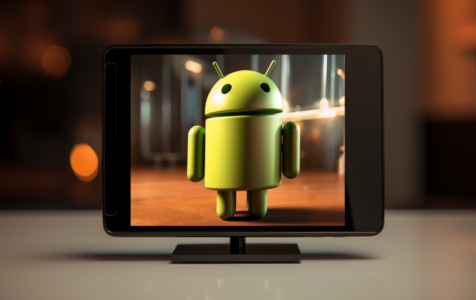Connecting your Android phone to your TV can transform your viewing experience, allowing you to enjoy your favorite content on a bigger screen. Whether it’s for streaming movies, sharing photos, or playing games, connecting your device to a TV can enhance your entertainment experience. In this article, we will explore three popular methods to achieve this: using a wired connection via HDMI, screen mirroring, and using a wireless HDMI device.
1. Wired Connection via HDMI
For a stable and reliable connection, using an HDMI cable is a preferred choice. This method requires checking the type of charging port your phone has and ensuring your TV has a compatible HDMI port. Most modern TVs come with standard HDMI ports, but you may need a special adapter if your TV is MHL-enabled. Here are the steps:
Determine the type of charging port your phone has (Micro USB, SlimPort-enabled Micro USB, or USB Type C).
Verify if your TV is MHL-enabled. If it is, you won’t need an additional adapter. For non-MHL-enabled TVs, an adapter will be necessary.
Connect your phone to the cable.
Connect the adapter to your TV’s HDMI port.
Switch your TV to the correct HDMI input, and you should see your phone’s display mirrored on your TV.
This method provides a direct and usually lag-free connection, making it ideal for watching videos or playing games.
2. Screen Mirroring
Screen mirroring is a convenient way to cast your phone’s display onto your TV wirelessly. Most modern Android phones and TVs support this feature. Here’s how you can do it:
Ensure your Android device and TV are connected to the same Wi-Fi network.
On your phone, swipe down from the top to access the Quick Settings panel.
Look for the screen mirroring option (named Smart View on Samsung devices).
Select your TV from the list of available devices.
Your phone’s screen should now be displayed on your TV.
This method is particularly useful for sharing photos, videos, or even presentations with a larger audience. However, it’s important to note that the quality and stability of the connection can vary based on your Wi-Fi network’s strength and the compatibility between your phone and TV.
3. Using a Wireless HDMI Device
If your TV doesn’t have screen mirroring capabilities or if you prefer a different solution, using a wireless HDMI device like Chromecast, Roku, or Amazon Fire TV can be a great alternative. Here’s a general guide on how to use these devices:
Plug the wireless HDMI device into your TV’s HDMI port.
Follow the device’s setup instructions to connect it to your Wi-Fi network.
On your phone, download and install the specific app required by the device (e.g., Google Home for Chromecast).
Use the app to cast content from your phone to your TV.
This method allows not just mirroring your phone’s screen but also streaming content directly from apps like YouTube, Netflix, and more. The setup might take a few extra steps compared to direct HDMI or screen mirroring, but the convenience of wireless streaming is a significant advantage.
User Experiences and Additional Tips
User reviews highlight the convenience and improved viewing experience that connecting an Android phone to a TV offers. Many appreciate the versatility of being able to choose between wired and wireless options based on their needs and the type of content they are viewing. For troubleshooting and community discussions, it’s always helpful to visit dedicated forums or support pages, such as the official Google Support page.
In conclusion, whether you prefer a wired connection for its stability or the convenience of wireless streaming, connecting your Android phone to your TV can greatly enhance your multimedia experience. Each method has its own set of advantages, and the best choice depends on your specific needs and the capabilities of your devices.
FAQ
Q: Can I connect my Android phone to a TV without an HDMI port?
A: Yes, you can use wireless HDMI devices like Chromecast, Roku, or Amazon Fire TV to connect your Android phone to a TV without an HDMI port.
Q: Is screen mirroring the same as casting?
A: Screen mirroring displays the content of your phone’s screen on the TV, while casting involves streaming content from apps on your phone directly to your TV.
Q: Do all Android phones support HDMI output?
A: Not all Android phones support HDMI output. It depends on the phone’s hardware and type of USB port. Check your phone’s specifications or user manual for HDMI support.
Q: Is a stable Wi-Fi connection necessary for screen mirroring?
A: Yes, a stable Wi-Fi connection is crucial for screen mirroring to ensure smooth streaming and reduce lag or disconnection issues.
Q: Can I still receive calls or use other apps while screen mirroring?
A: Yes, you can receive calls or use other apps while screen mirroring. However, the activity on your phone will also be displayed on the TV screen.
